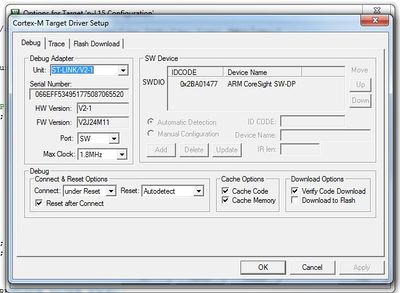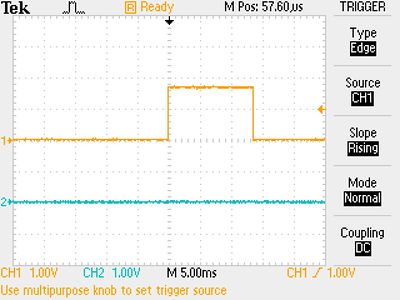Difference between revisions of "N-L15 preparations"
From emboxit
m (1 revision) |
|
(No difference)
| |
Latest revision as of 07:41, 26 August 2017
Contents
Reducing the sleep current
<cpp> // NIKOS: THIS WORKS REDUCING THE POWER DRASTICALLY GPIO_InitTypeDef GPIO_InitStructure = {0}; GPIO_InitStructure.Pin = GPIO_PIN_All; GPIO_InitStructure.Mode = GPIO_MODE_ANALOG; GPIO_InitStructure.Pull = GPIO_NOPULL; //HAL_GPIO_Init(GPIOA, &GPIO_InitStructure); //HAL_GPIO_Init(GPIOB, &GPIO_InitStructure); HAL_GPIO_Init(GPIOC, &GPIO_InitStructure); HAL_GPIO_Init(GPIOD, &GPIO_InitStructure); HAL_GPIO_Init(GPIOH, &GPIO_InitStructure); </cpp>
Wake time
uVision ST-LINK configuration
No more need for manual reset for flash programming

32.768 KHz
Redirect printf()
<cpp> Serial pc(PA_9, PA_10); //N-L15 UART1 IS CONNECTED TO FTDI </cpp>
RTC
sht21
1 Start Up Sensor As a first step, the sensor is powered up to the chosen supply voltage VDD (between 2.1V and 3.6V). After power-up, the sensor needs at most 15ms, while SCL is high, for reaching idle state, i.e. to be ready accepting commands from the master (MCU). Current consumption during start up is 350µA maximum. Whenever the sensor is powered up, but not performing a measurement or communicating, it is automatically in idle state (sleep mode).
MAX44009
Operational at 1uA
BMP180
- STANDBY:0.1uA
- ULTRALOW POWER: 3uA
- STANDARD MODE: 5uA
- PEAK (CONVERSION): 1000uA
CURRENT JUMPER
- In L-15 total current including n-node current
- In L152 n-node current bypasses the switch and the Jumper, so n-nodes current is not meassured
